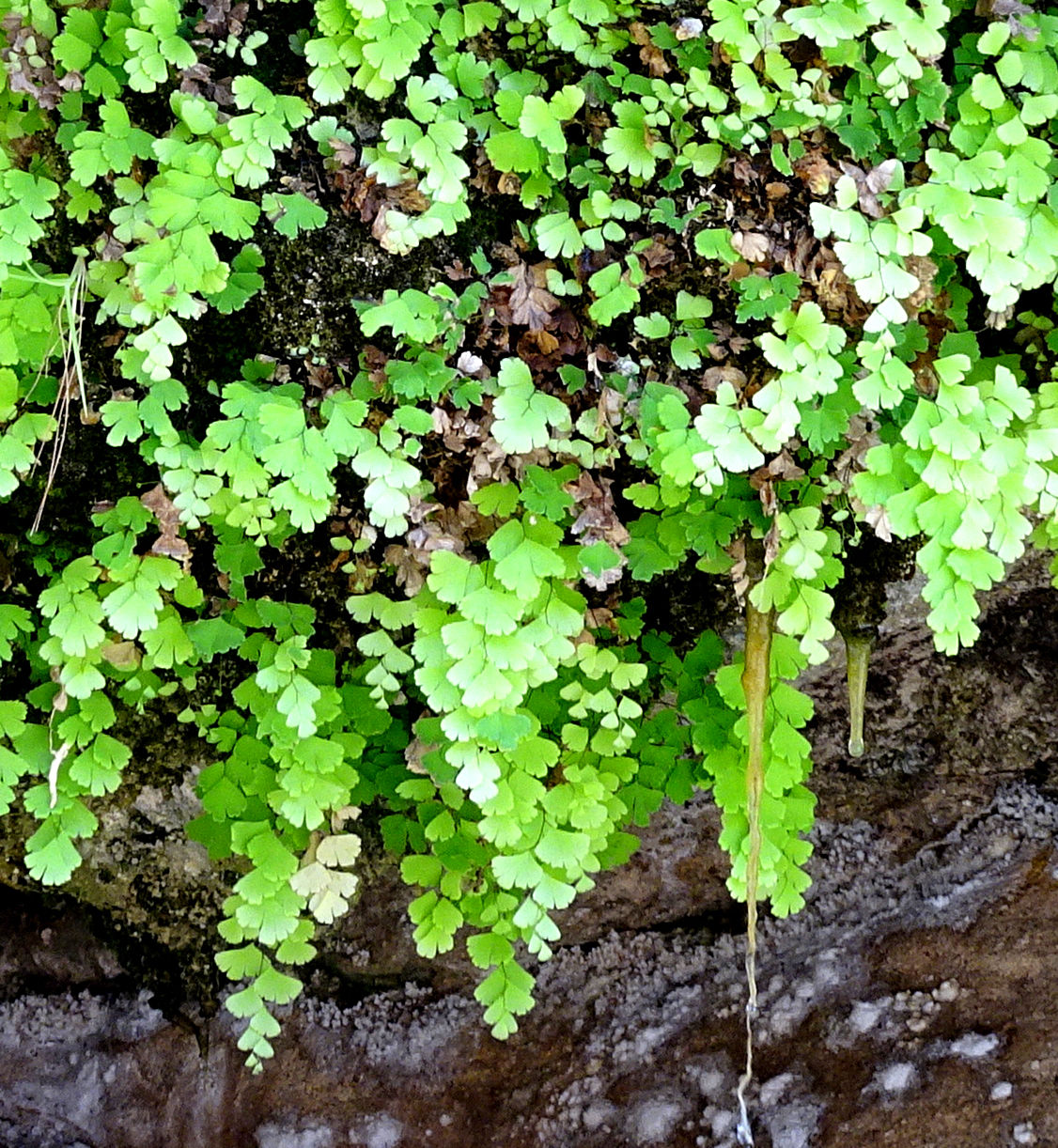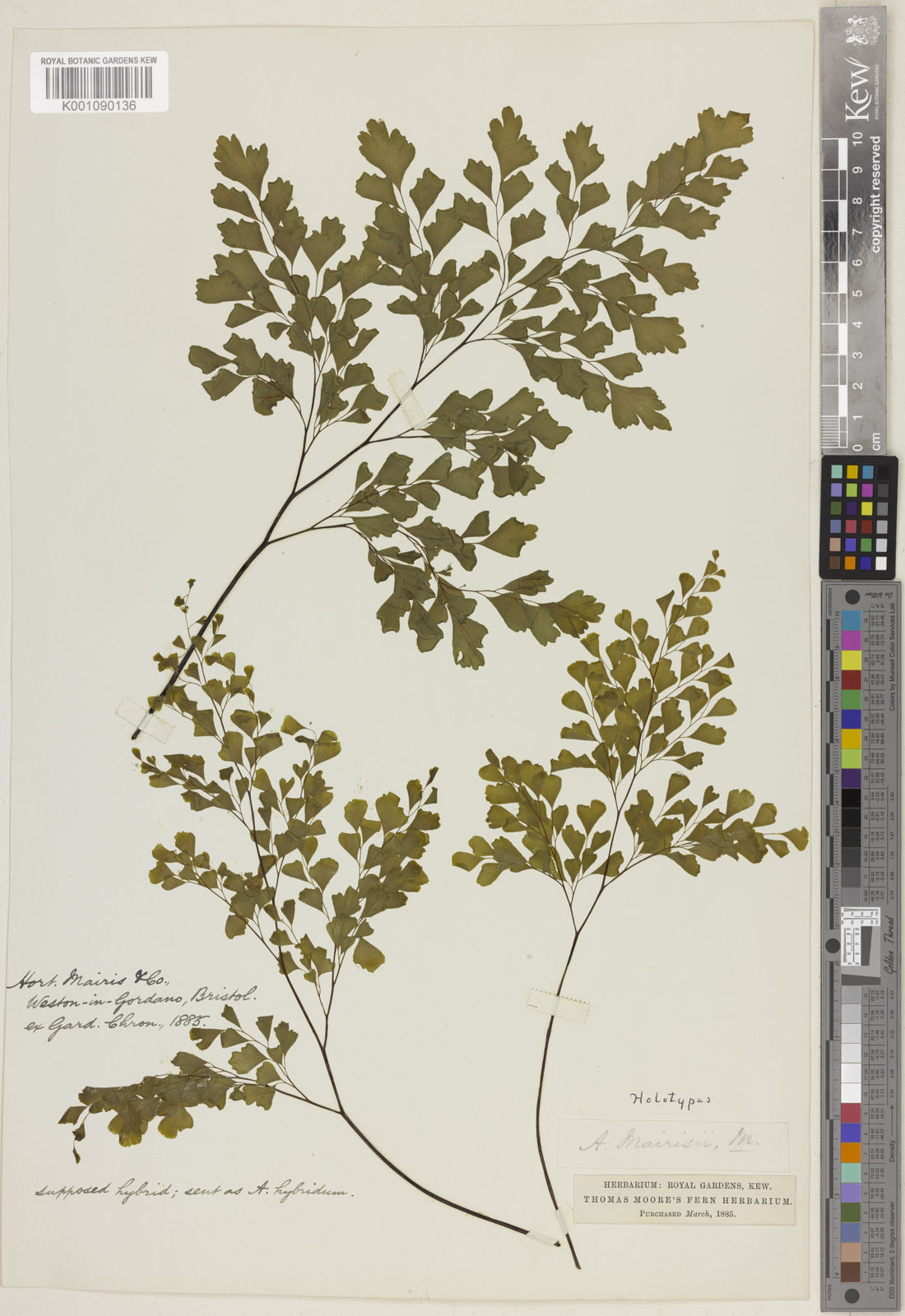Maidenhair Fern
adiantum capillus-veneris
Also known as: ["Southern Maidenhair Fern","Fountain Fern"]
Overview
A delicate, graceful fern with black stems and fan-shaped leaflets, native to moist, shady habitats.
Benefits & Perks
["aesthetic foliage","shade tolerant","wildlife attractant (bees, butterflies, birds)"]
Botanical Classification
| Phylum: | Tracheophyta |
| Class: | Polypodiopsida |
| Order: | Pteridophytales |
| Family: | Pteridaceae |
| Genus: | Adiantum |
| Botanical Name: | Adiantum capillus-veneris |
Plant Characteristics
Basic Information
- Category: Leaf Plants
- Suitable Location: shaded garden bed or indoor pot in a humid, bright location
- Suitable For:
- Is Weed: No
- Allergenicity: low
Environmental Needs
- Climate: {"temperatureRange":"10–30°C"}
- Hardiness: {"zones":"8–11"}
- Misting: every 2–3 days to maintain humidity, especially in dry environments
- Drainage: Fast-draining to prevent root rot.
- Soil Type: Well-draining, rich, acidic to neutral soil; peat-based mix with perlite or sand.
Maintenance Level
- Maintenance Level: moderate
- Toughness Level: moderate
- Pruning Frequency: As needed; typically every few months or when fronds decline.
- Pruning Intensity: Light to moderate; remove only damaged or old fronds.
Care Details
Ideal Sunlight Coverage:
Bright indirect light; 4–6 hours of filtered sunlight daily; avoid direct sun.
Sunlight Tolerance Tips:
Acclimate gradually to new light conditions; protect from harsh midday sun; place in shaded outdoor areas.
Care Requirements
Care Difficulty
moderatemoderate
Sunlight
partial shade to filtered light
Rotate plant for even growth; use sheer curtains to filter light; avoid south-facing windows.
Watering
every 7–10 days, allowing soil to dry slightly between waterings
Maintain even moisture; avoid letting soil dry out completely; ensure good drainage.
Soil
moist, well-draining, humus-rich soil
pH: 5.5–6.5 (slightly acidic to neutral).
Ensure pots have drainage holes; avoid heavy clay soils; maintain consistent moisture.
Temperature
65–75°F (18–24°C); prefers stable temperatures; avoid drafts and extreme fluctuations.
Avoid placing near vents; maintain stable room temperature; monitor for signs of stress.
Fertilizing
every 4–6 weeks during growing season (spring to summer)
Dilute fertilizer to prevent burn; apply to moist soil; flush soil occasionally to prevent salt buildup.
Propagation
Methods
Spores or division of rhizomes.
Step-by-Step Propagation Guide
- Collect spores.
- Scatter on sterile medium.
- Keep moist.
- Or divide rhizomes.
- Replant immediately.
Best Time: Spring or early summer when plant is actively growing.
Environment
High humidity (70–90%); warm temperatures (70–75°F); indirect light.
Medium
Mixture of peat and sand or specialized spore-starting medium.
Hormone
Not required for spores; division may benefit from rooting hormone.
Timeline
Spores: 1–3 months to germinate; division: immediate establishment.
Tools Needed
Spore collection kit, sterile knife, pots, humidity dome.
Quick Tips
Use a humidity dome for spores; ensure rhizomes have healthy roots for division.
Pruning & Repotting
Pruning Guide
Method
Snip individual fronds at the base; avoid cutting into healthy growth.
Pruning Plan
Remove dead or yellowing fronds to maintain appearance and health; encourage new growth.
Tools
Clean, sharp scissors or pruning shears.
Checklist
Inspect for dead fronds; use clean tools; remove carefully.
Repotting Guide
Best Season
Spring, before active growth begins.
Pot Size
One size larger pot; ensure it’s not too large to avoid waterlogging.
Method
Remove plant gently; trim roots if necessary; use fresh, well-draining soil; ensure drainage holes.
Suggestions
Repot every 2–3 years or when roots fill the pot; benefits from fresh soil.
Checklist
Choose appropriate pot; prepare new soil; handle roots carefully; water after repotting.
Advanced Care Tips
Watering Mastery
Watering Checklist
Check soil moisture; water evenly; ensure drainage; avoid leaf wetting.
How to Apply Water Properly
Water thoroughly until water drains from the bottom; focus on root zone; avoid wetting foliage; water in morning.
Watering Schedule Tips
Keep soil consistently moist but not waterlogged; water when top inch of soil feels dry; reduce frequency in winter.
Soil Improvement
Add perlite or sand for drainage; incorporate organic matter like peat moss.
Temperature Stress Management
Signs of Temperature Issues
Yellowing fronds, stunted growth, or browning leaf tips.
Cold Stress
Slows growth; may cause fronds to wilt or turn brown; susceptible to root rot in cold, wet soil.
Solution: Move to a warmer location; protect from drafts; ensure soil doesn't stay wet.
Hot Stress
Fronds may wilt, brown, or curl; increased water loss; potential for heat damage.
Solution: Increase humidity; provide shade; water more frequently but avoid overwatering.
Fertilizing Guide
Fertilizing Checklist
Use diluted fertilizer; apply during active growth; avoid dormant periods.
Fertilizing Method
Use balanced liquid fertilizer diluted to half strength; feed monthly during growing season (spring/summer); avoid winter.
Common Problems & Solutions
Toxicity Warning
Cats
Non-toxicAdiantum capillus-veneris is not considered toxic to cats. It does not produce any known harmful effects when ingested or touched by felines.
⚡ Toxic If:
Generally non-toxic
Dogs
Non-toxicAdiantum capillus-veneris is not considered toxic to dogs. There are no documented cases of adverse effects from ingestion or contact with this plant.
⚡ Toxic If:
Generally non-toxic
Humans
Non-toxicAdiantum capillus-veneris, commonly known as maidenhair fern, is not considered toxic to humans. It has no known adverse physiological effects when ingested or touched.
⚡ Toxic If:
Generally non-toxic
Frequently Asked Questions
Q: How often should I water Adiantum capillus-veneris?
A: Keep the soil consistently moist but not waterlogged; water when the top inch of soil feels dry.
Q: Does this fern need direct sunlight?
A: No, it prefers bright, indirect light or partial shade.
Q: Can I grow this fern indoors?
A: Yes, it thrives indoors in humid environments with indirect light.
Quick Reference
| Family: | Pteridaceae |
| Care: | moderate |
| Light: | partial shade to filtered ligh |
| Water: | every 7–10 days, allowing so |
Get Expert Care Tips
Download the Plantious app for personalized care reminders and plant identification!
Google Play App Store








